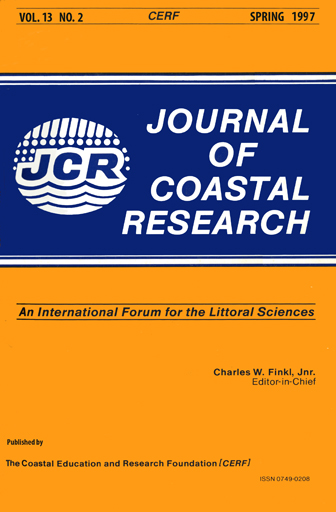Clay Mineral Distributions to Interpret Nile Cell Provenance and Dispersal: II. Coastal Plain from Nile Delta to Northern Israel
Keywords:
Clay minerals, coastal erosion, Egyptian shelf, eolian, Gaza, hamra, High Aswan Dam, Israel coastal plain, Israeli rivers, kurkar, Levant margin, Mediterranean, Nile delta, Nile littoral cell, Sinai margin, Wadi EI ArishAbstract
This study identifies clay mineral assemblages between the eastern Nile delta and northern Israel to complement and refine interpretations of modern sediment provenance and dispersal patterns in the SE Mediterranean. Previous petrological investigations indicate that the River Nile has been the dominant source of sediment transported to the Levant Sea, whereas sediment contributions from Sinai, Gaza and Israeli rivers and coastal cliff exposures in this region have been minor. However, this sediment dispersal pattern, modelled as the Nile littoral cell, is now being altered as a response to the High Dam at Aswan, barrages along the Nile valley and in the Nile delta, and water diversion by the high-density canal system in the Nile delta. As a result, Nile sediment input identified by high proportions of smectite is presently derived from erosion of the delta margin rather than from direct dispersal by the river proper.
The present investigation records important percentages of kaolinite in the clay fraction of samples recovered in coastal cliff exposures, from east of Bardawil lagoon and Wadi EI Arish to the Lebanon-Israel border. Clay mineral assemblages in the fluvial channels on the coastal plain east of the Nile delta are considerably more variable: those west of EI Arish are smectite-rich, while those on the plain east and north to the Tel Aviv region are kaolinite-rich; clay assemblages between Tel Aviv and Atlit are smectite-rich; still farther north, locally between Atlit and Haifa, assemblages in some fluvial channels comprise high percentages of illite, and those from north of Haifa to the Lebanese border record large proportions of kaolinite and illite. These laterally variable clay assemblages on the Sinai, Gaza and Israeli coastal margins are more closely related to the different source terrains in highlands that back the coastal plain than to distal Nile provenance. Modern clay minerals near the coast are derived from (1) rivers that flow seasonally from highlands in Sinai and Israel, (2) seasonally variable winds that carry dust from arid and semi-arid regions toward the coast, and (3) wave current erosion of coastal exposures. As the amount of distal Nile-derived clay from Egypt is reduced, these more proximal sources will likely to account for increasing proportions of clays supplied to Sinai and the SE Levant margin.


